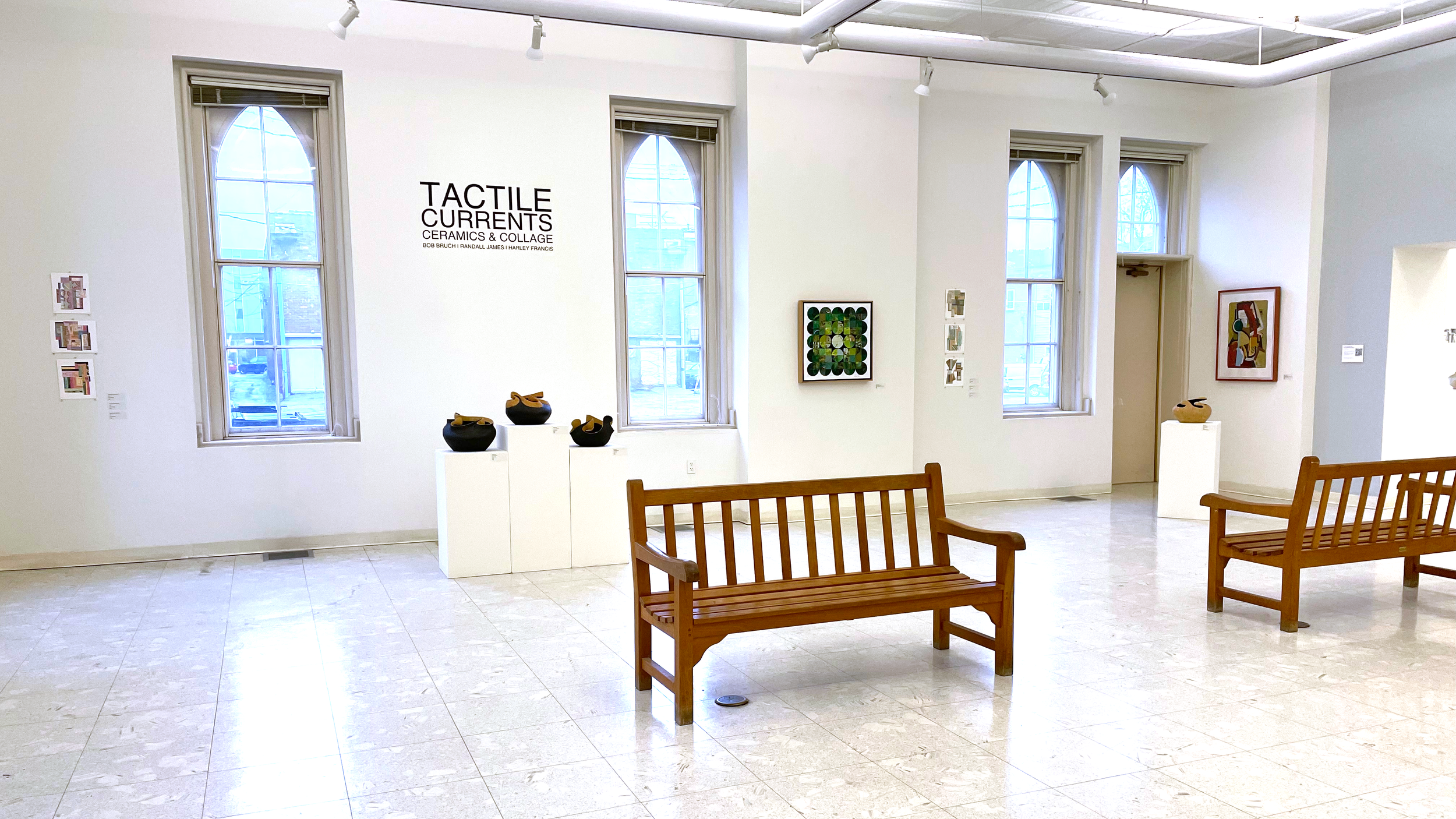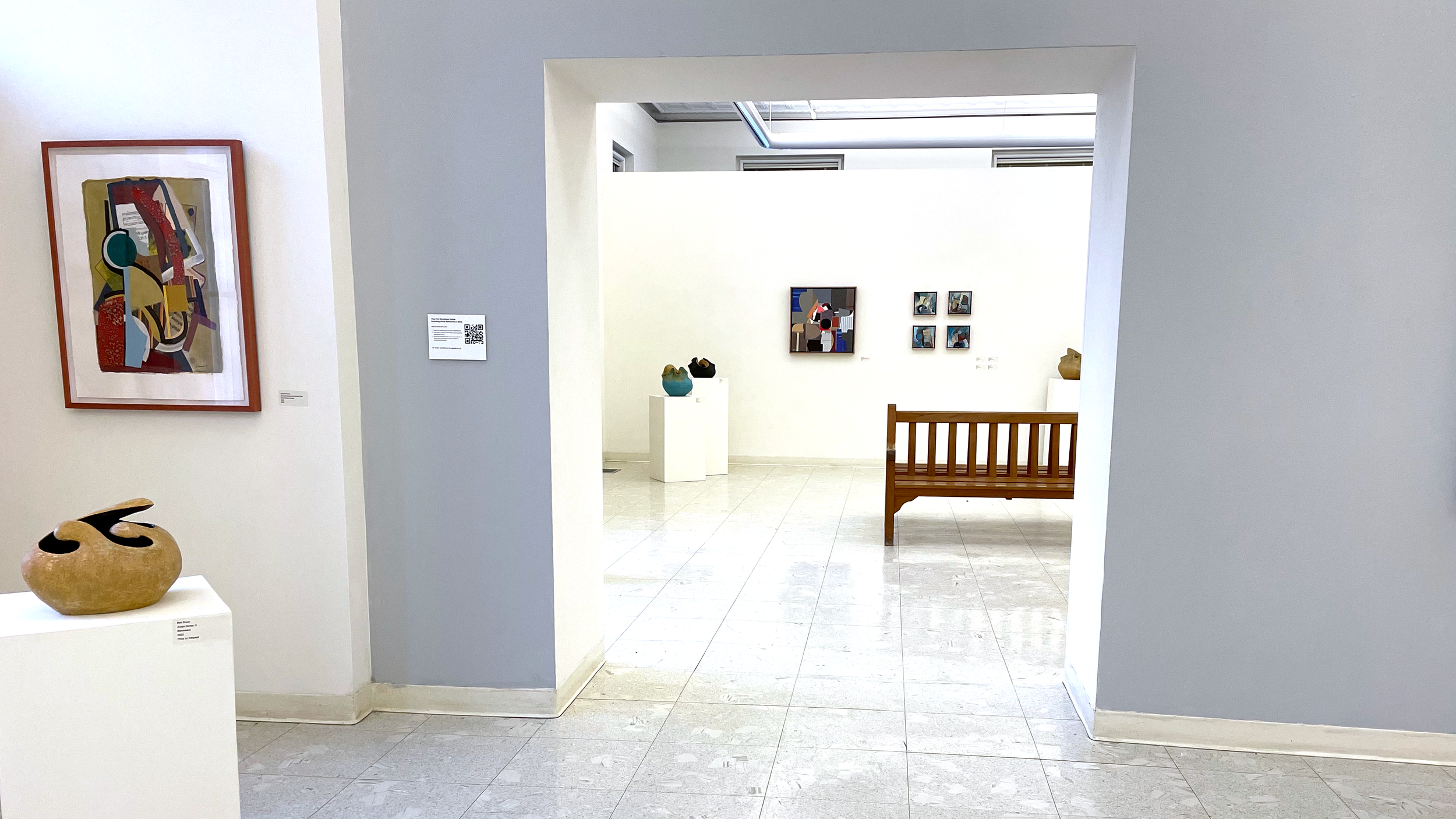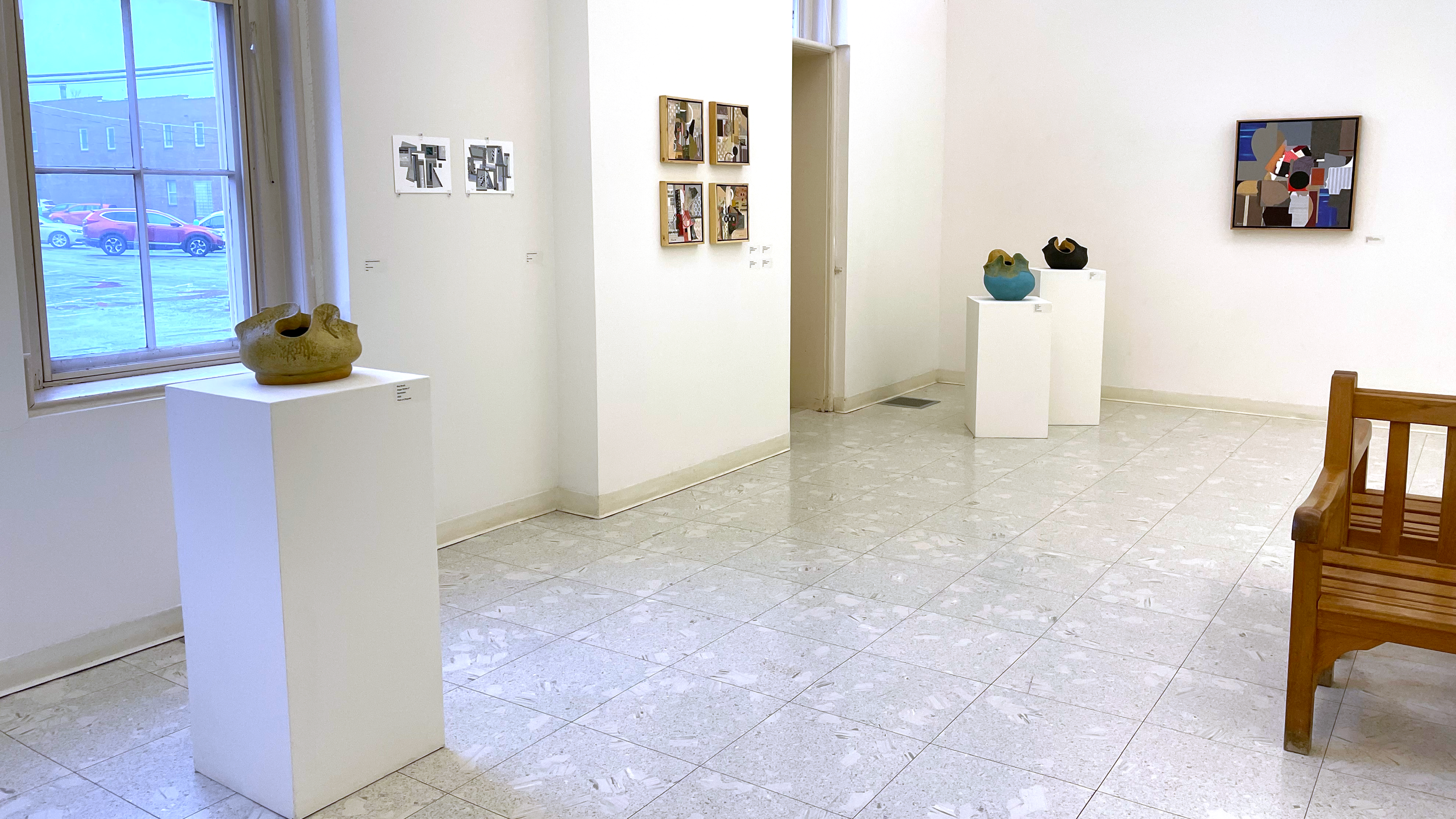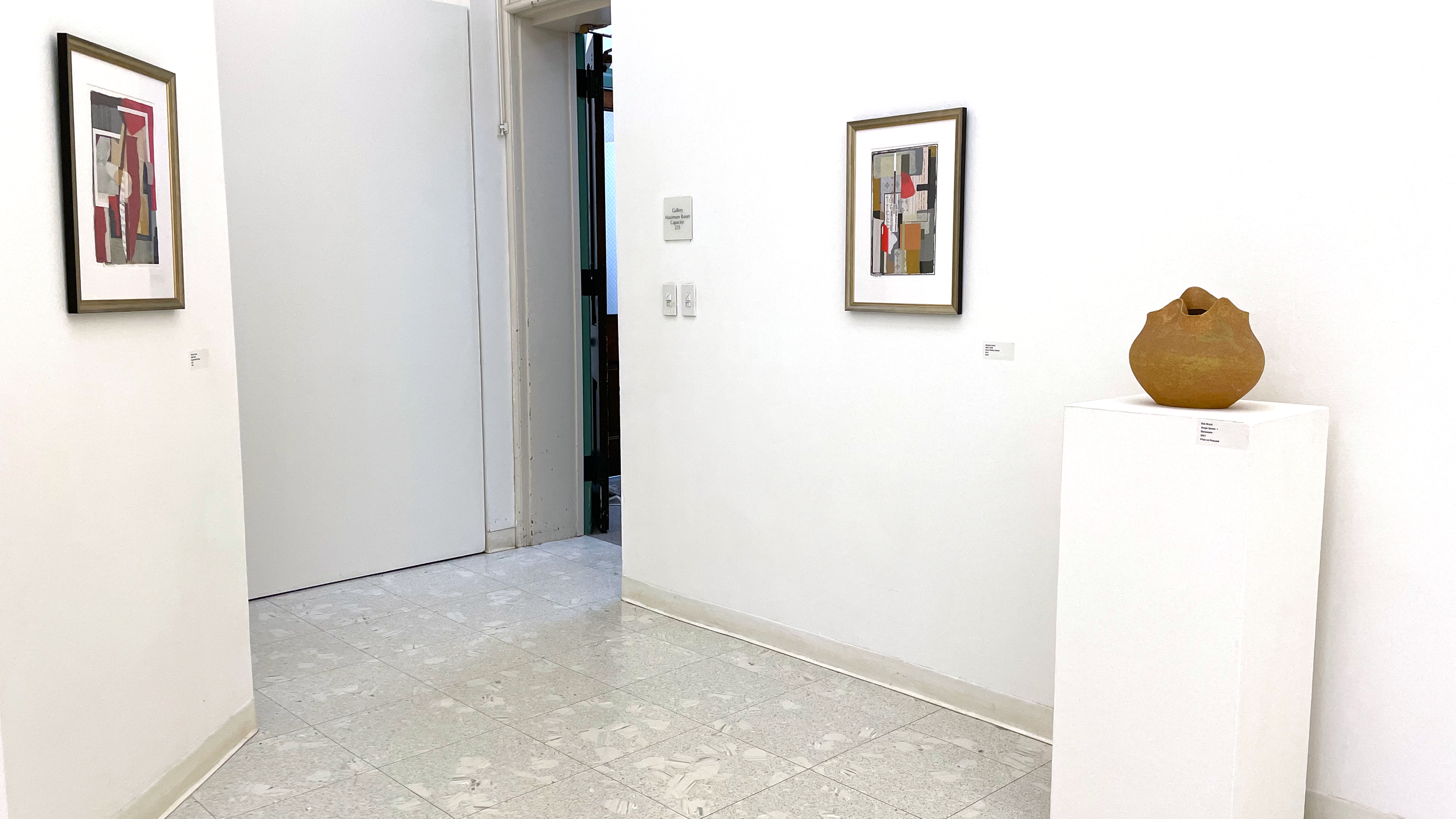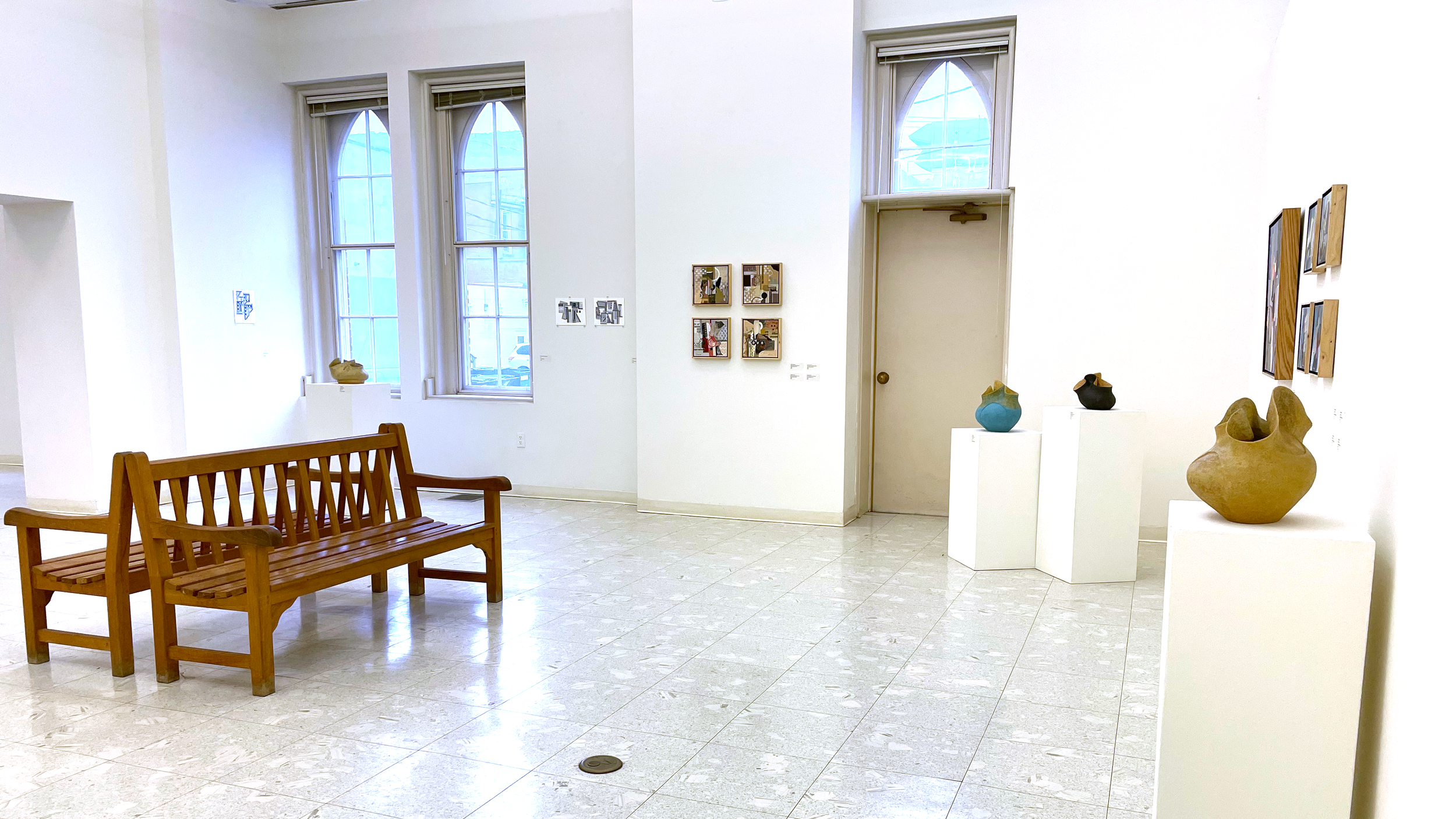FIRELANDS ASSOCIATION FOR THE VISUAL ARTS
Tactile Currents
Ceramics & Collage
Bob Bruch | Randall James | Harley Francis
February 12 - March 13
Enjoy this preview of our current exhibition on display at FAVA Gallery. Visit us and explore texture, layering, and movement, experience the physical and intangible tactility of this work in-person!
Bob Bruch
Artist Statement:
While serving as bowls and vases, my ceramic works also engage in a sculptural dialogue between volume and line. Through the silent voice of clay, they seek to elicit, capture, and narrate stories of movement. They speak of air, water, and magnetic currents; of surges, eddies, vortexes, and streams.
My irregular, apparently random, coil-built constructions result from variances introduced at the base of each vessel during the initial phase of my hand-building process. From these slight modifications in the base, a uniquely organic – yet “predetermined” – shape emerges. As my constructions close in along the top of each piece, I introduce a more deliberate edge or line. The tension and dialogue between line and volume, complemented by my surface treatment of each pot, produce each work’s narrative contour.
Bio:
Bruch has led a “double life” of sorts in the field of business, as well as art, first receiving a B.S. in Economics from Lehigh University, followed by an MBA from Stanford Business School. Upon graduating from Stanford, during the tumultuous period of the Vietnam War, he spent several years in a pilot MBA program for VISTA (domestic Peace Corps) consulting for community groups in a Hispanic neighborhood in San Francisco.
It was during this time that he first began to work as an artist – a practice that he continued to develop while later pursuing a career in business. This expertise in business and art allowed him to create Clayworks, a ceramics cooperative in Cleveland Heights in 1978.
In the 1990’s, Bruch spent four years at the Cleveland Institute of Art and later also received a graduate degree in Nonprofit Management from Case Western Reserve University in 1996.
He has since has exhibited work in a range of venues, including the prestigious Strictly Functional Pottery National Show, the Clay National Exhibition, and the Annual Juried Competition of Contemporary Islamic Art.
Randal James
Artist Statement:
What informs my art practice more than anything is the idea that we are in the world, but not of it. Abstraction moves us beyond what is known and engages the deeper associative process of the mind. The materiality of paint and paper play across a surface and provoke deep and subtle human emotion. I am interested in provoking within the viewer these deeper layers of feeling-tone that reside outside normal modes of interaction. The use of abstraction is a deliberate move to by-pass the language centers of the brain. Labels and words offer predefined meanings and conventions that often prohibit the recognition and experience of these deeper layers. There are intangible and ineffable forces that motivate and animate human existence. These forces generate paradox. We are social individuals, communal yet separate. We are embodied spirits that seek to know what was forgotten.
Recognizing that we are souls and spirits having human experiences, I present an abstract metaphorical vision of the interpenetration of the material and the immaterial, of the body and the soul. How is it that form manifests out of formlessness? How can subject and object appear separate yet can be experienced as one? How can it be that - we are the universe - and we seem to not know it? There is a unity in our multiplicity; a kind of beauty in the arrangement and rearrangement of the misplaced and forgotten. There is a space between structure and chaos, geometry and organicity, modernity and postmodernity, where the subjective and the universal merge to reflect a new reality that includes and transcends these dualities. It is that new hybrid space I am attempting to capture. My collages and mixed media works explore these abstract ideas and seek answers to these questions in both form and process.
Bio:
Born at the end of 1961 in Cincinnati, OH. As a young boy of 7 or 8 he was encouraged in art making by his mother as she would take him to weekly art lessons at the local art museum. It was at this early age that he found the joys of self-expression and learned how art can calm and contain opposing internal forces. These early experiences paved the way toward his eventually finding the profession of art therapy. He obtained an BS degree in art therapy from Bowling Green State University in 1988, and then a MA degree in art therapy from George Washington University in 1994.
Randall spent much of his time painting in oils as a young adult. This eventually gave way to collage and mixed media, which are his preferred materials at this time. While Randall has spent some time drawing and painting from life, he has always gravitated toward abstraction. There is a greater sense of the universal in abstraction. Abstraction allows the artist to work more directly with internal forces and energies. The themes of order and chaos, flat surface and depth, light and dark, the dynamic tensions of curve and line, juxtaposing colors and tones, all speak to internal states and energies that all humans have in common. As Mondrian stated, “subjectivity ceases to exist only when the mutation-like leap is made from the individual existence to the universal existence.” Abstraction gives me the vehicle to help us make that leap.
Harley Francis (1940-2017)
Bio:
Harley Francis (1940-2017) was an American mail artist, painter, set designer and *artistamp creator. Harley earned a Bachelor of Arts from Indiana University in 1965 and then held a graduate assistantship at Oberlin College for two years.
Harley began making artistamps in 1974. He had an interest in philately (the collection and study of postage stamps) from an early age, and this interest ultimately led him to establishing his own local post, Tristan Local Post, in 1975 in Oberlin, Ohio. Harley began to issue stamps from Tristan Local Post, but he was not aware of other stamp artists and Mail Art until seeing the catalogue of the artiststamp exhibition organized by James Felter at Simon Fraser University in 1975-76. This opened up various contacts for Harley, and he began to participate in the mail art network.
It was around 1978 that Harley closed Tristan Local Post and established his own independent state, Terra Candella (Land of Light). It was under these auspices that all his future mail art would be conducted. He continued to broaden his contacts in the network, including his first trip to Europe in 1980 to meet with other mail artists.
In 1987 he curated the “Corresponding Worlds International Mail Art and Artistamps Symposium” at the Allen Memorial Art Museum (Oberlin College), the first artistamp exhibition at the Allen. According to Harley, “This was the first museum-level exhibition curated of artistamps and mail art in the United States.” Harley facilitated the exhibition of artistsamps at Allen Memorial Art Museum at Oberlin College in 1978, an exhibition organized by Al Souza. This was followed by a large mail art show curated by Harley at SPACES Gallery in Cleveland, and then in 1987 he organized the Corresponding Worlds exhibition at Allen Memorial Art Museum. The event consisted of both a museum exhibition of artistamps and mail art, and a symposium. In 1995 he sold his archive composed of works collected from 1975-1995 to the Clarence Ward Art Library at Oberlin College.
In 1995 Harley moved from Oberlin to California, continuing still to participate in the mail art network and organize exhibitions related to mail art and artiststamps.
*Artistamp or artist's stamp refers to a postage stamp-like art form used to depict or commemorate any subject its creator chooses. Artistamps are a form of “Cinderella stamps” in that they are not valid for postage, but they differ from forgeries or bogus/illegal stamps in that typically the creator has no intent to defraud postal authorities or stamp collectors.
Quotes from Harley Francis about his collage work:
"I love the collage; it started out I think in the 70‘s and I would combine it with painting, and then just introduce a few collage elements, then paint on it and then it just developed into pure collage; it’s like painting with paper - I approach it exactly the same way."
"Of course it's played a big part in the artistamps because most of the stamps, the vignettes, are collages.”
"With all the stamps that I handle and especially all the envelopes, I think the first thing I started noticing was all the wonderful array of envelope linings, the patterns on the inside of the envelopes. And through the stamps I would get letters and things that date back fifty or more years from all over the world. The multitude of patterns was fascinating and I started saving those and then it expanded into all kinds of detritus and when I traveled, I was fascinated because there are things like Kyrene bus tickets that are absolutely exquisite in and of themselves –beautiful papers and imprinted in a very sort of crude folk art kind of way and they’re very beautiful and covered of course with Arabic script. So, all of the detritus from when I traveled and all the different people I know that traveled, I would ask them to save their detritus so I have an enormous store of papers and it covers everything from stamps and currency, envelope lining, candy wrappers, tickets, from all over the world, all different periods. And I’m always looking out for paper. I once was at Petimento in San Francisco and there was a beautiful rug that had been woven in Sri Lanka and it had the most glorious tag on the bottom on in Senegalese and I went through the whole charade of holding it up and talking about how beautiful it was while I frantically pulled the label off the bottom of it so I could have it for my collage work (laughs)... I’m always peeling off nice foreign beer labels and things like that to use."
COME SEE THE SHOW IN-PERSON


